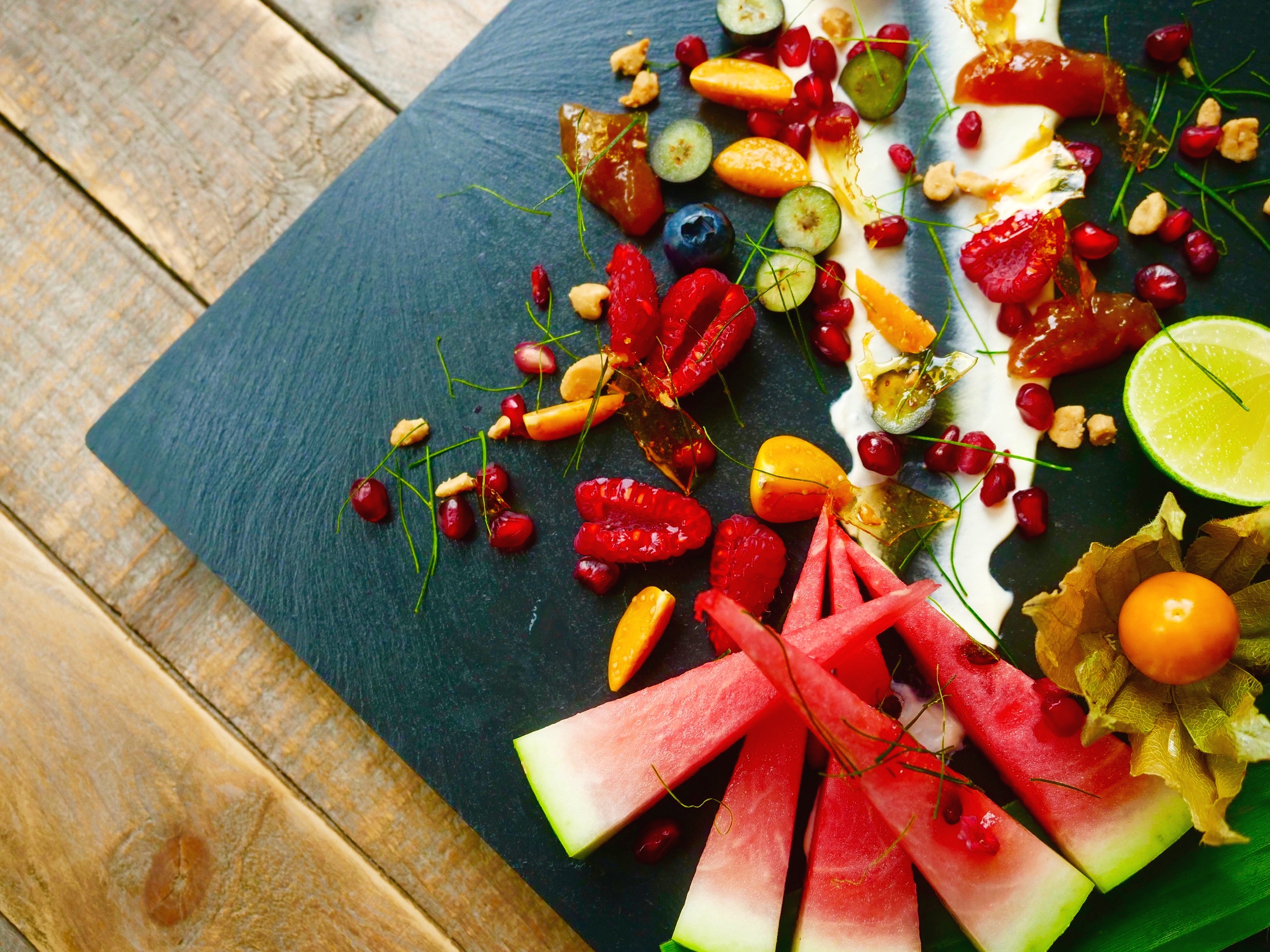Banana & cassia bark jam, fresh seasonal fruits, salted peanut praline & lime coconut cream

A delightful concoction that marries the charm of British Eton Mess with the vibrant flavours of Thai ingredients. At Farang, we affectionately call this dessert ‘the Farang mess’—not only for its resemblance to the quintessentially British Eton Mess but also for its endearing chaotic appearance. Our version stems from a relentless quest for the perfect meringue, unlike the Eton Mess, which was conceived in 1893 at Eton College as a treat for cricket matches. While the Eton Mess has secured its place in culinary history, only time will tell if our Farang Mess will be similarly immortalised. This dessert is a playful creation by me and my fellow chef, Charlie Whatley, as we explore the delightful intersection of British baking techniques with bold Thai ingredients. Despite our non-traditional roots, we thrive on introducing innovative techniques to our dishes. After all, while Britain might have its challenges, we certainly know how to whip up a cracking dessert! This dish is a symphony of textures—crispy, soft, crunchy, and smooth—and a medley of flavours—salty, sweet, bitter, and sour. Even if you make a mess of it, the results are likely to be deliciously satisfying.
Ingredients
For the Coconut Cream
8 coconuts, cracked with a hammer and peeled to the flesh (or 1 tin coconut cream if you prefer less effort)
2 litres water, boiling
For the Praline
50ml water
200g white sugar
10g peanuts, toasted and semi-pounded in a pestle and mortar
20g toasted coconut flesh (use coconut that has been cracked for cream)
1 pinch flaked sea salt
For the Banana Jam
1kg ripe bananas, peeled and chopped into chunks
60ml fresh lime juice, 2-3 limes
1kg light soft brown sugar
1 pandan leaf, torn to release flavour
4 apples, peeled, cored, and chopped
10g cassia bark, lightly toasted whole in a dry pan
For the Salted Coconut Cream
200ml fresh coconut cream
1 tsp white rice flour
1 pinch Malden sea salt, crumbled as fine as possible
To Serve
1/4 pomegranate, prepped into seeds
100g prepped watermelon
6 physalis, cleaned and sliced into quarters
20g raspberries
20g strawberries
1 mango, peeled and chopped into mouthfuls
Method
Coconut Cream: Crack the coconuts with a hammer and remove the outer shell, leaving the inner flesh. Peel off the inedible skin using a peeler. Mince or grate the flesh and combine with boiling water using a stick blender for about 5 minutes. Strain the mixture through muslin or cloth to separate the liquid. Refrigerate to separate the cream from the water. Keep the coconut water for curries or as a refreshing drink. Toast any leftover grated coconut until golden brown.
Praline: Melt sugar in a pan over medium heat, stirring constantly. Once melted, increase the heat until it caramelises (around 6-8 minutes). Pour onto a parchment-lined tray, sprinkle with peanuts and salt, and let cool. Break into pieces and store in an airtight container.
Banana Jam: Combine bananas, cassia bark, pandan, apples, and sugar in a non-stick pan. Cook over medium heat for 35-40 minutes until thickened. Boil to jam-setting temperature (104-105.5°C) or test by placing a teaspoon on a chilled plate. Once set, add lime juice and store in sterilised jars.
Salted Coconut Cream: Simmer the cream and whisk in the rice flour until smooth. Boil, then reduce to a simmer, whisking constantly. Add salt and cool.
To Plate: Layer banana jam on the coconut cream, top with praline, fresh fruit, and toasted coconut. Embrace the mess!
Cheers for reading, and enjoy the delicious chaos of the Farang Mess. Until next time!
Head chef & founder of Farang London restaurant. Cookbook author of ‘Cook Thai’ & ‘Thai in 7’. Chief curry paste basher and co-founder of Payst London.
